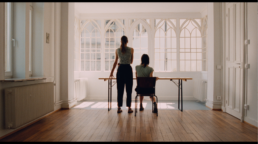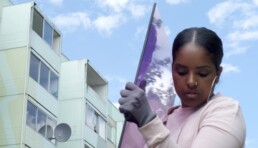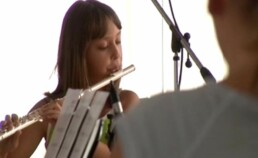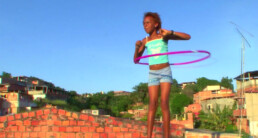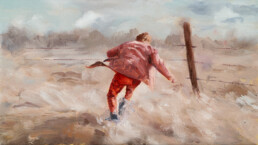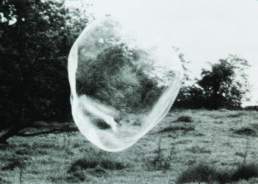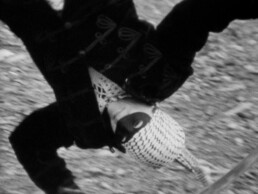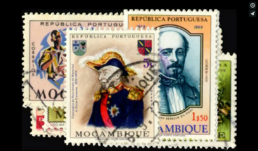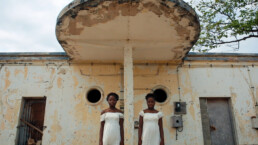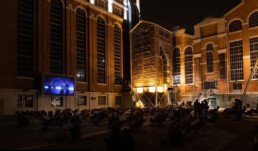FUSO 2022 – 23 a 28 de Agosto
27 Agosto, 22h00
Castelo de São Jorge – Castelejo
MAGIC WORLD
Ana Rito
Why do you wanna wake me from such a beautiful dream?
Can’t you see that I am sleeping?
So why don’t you leave me alone?
For life is so exciting on the island in my room
And as I sing and dance along the shadows of the moon
(Porque queres acordar-me de um sonho tão belo?
Não vês que estou a dormir?
Porque não me deixas em paz?
Porque a vida é tão excitante na ilha do meu quarto
E eu canto e danço com as sombras da Lua)
“Magical World”, Rotary Connection, 1968
“Magical World”, de Johanna Billing, foi realizado num centro-escolar em Dubrava, um subúrbio de Zagreb. Um grupo de crianças ensaia a música homónima de 1968 dos Rotary Connection – uma das primeiras bandas dos Estados Unidos a tocar uma mistura de pop-rock psicadélico e soul music num ambiente activista e de defesa dos direitos civis na década de 1960. O filme faz coincidir o contexto histórico desta canção com a vida real de uma geração de crianças que cresce num país em plena construção.
O presente programa, que lhe repete o título, é composto por uma colecção de melodias, silêncios e duas estruturas cinematográficas que têm na voz o fora de campo, procurando resgatar-lhe a audácia da imaginação, do sonho, da ficção como manifestação da resiliência – que tem na capacidade de encantamento o seu motor.
E é na infância, na juventude, que o mundo parece ter a dimensão do nosso quarto, onde, com o som do rádio bem alto, todas as possibilidades são vividas e tudo parece estar ao alcance de um fechar de olhos e do mais profundo dos desejos, como na letra acima: “For life is so exciting on the island in my room”.
Segundo Georges Didi-Huberman, as sociedades contemporâneas, capitalistas, promovem aquilo que denomina de “desimaginação”, ou a não promoção do desenvolvimento de sentido crítico e inventivo nas gerações mais jovens. Ora, o exercício da imaginação – do sonho à alucinação – surge, nesta proposta curatorial, como forma de resistência e regeneração (dos corpos, das imagens, dos mundos).
O gesto circular de “Janiele”, de Caetano Dias – do bambolear do arco ao movimento da câmara – desenha a linha que, a ritmos diferentes, estabelece uma espécie de corporealidade que atravessa a nossa proposta.
“In Purple” acompanha um grupo de jovens da escola de dança Mix Dancers Academy em trânsito pela cidade de Råslätt, nos subúrbios da Suécia. Parecem carregar o peso da mudança transmutado num enorme vidro roxo. Carregam em ombros.
Enquanto comunidade; gerando comunidade.
«Some are like water, some are like the heat, some are a melody and some are the beat, sooner or later they all will be gone, Why don’t they stay young?» No filme de José Maçãs de Carvalho, uma versão de “Forever Young” do grupo Alphaville (1984), cantado em cantonense, anima uma imagem publicitária de um jovem chinês, numa rua de Hong Kong. Imortalizando-o.
Ser para sempre jovem. “Phoenix Flight (Via Crucis is not 4U)”, de Juliana Julieta convoca o processo de transposição e voo da fénix, num ritual de renovação e renascimento contínuo.
Ser para sempre jovem.
Esta fuga em frente manifesta-se de seguida em “Enigma” de Pierre Coulibeuf. |
Duas mulheres que indicam a imagem por vir. Aqui, a imagem torna-se imensurável,
e imensuráveis tornam-se também as relações que se fundam, porque é o tempo que aqui importa e que se torna matéria – no duplo sentido que esta palavra suporta –, o tempo vivido que torna indiscerníveis real e simulacro, real e ficcional. Ou seja, Enigma apresenta-nos o sonho e a ficção (ou alucinação) como formas únicas de apreensão da realidade real.
«A imagem é um sopro, um fôlego», diz-nos Deleuze, e mostra-nos Cao Guimarães e Rivane Neuenschwander em “Inventário de pequenas mortes (Sopro)”. Lembrando, no contexto da nossa narrativa, “Les Bulles de Savon” de Édouard Manet (1867) ou, antes dele, Jean Siméon Chardin (1734), onde vemos dois jovens a lançar bolas de sabão. Seguimos a sua trajetória, apreendendo-lhes o rasto, indagando o seu rebentamento.
Do sonho? Do arco que bamboleia? Do corpo em fuga? Do vidro roxo levado em braços? Ou observamos a sua resistência? A plasticidade que é própria das imagens sobreviventes.
DES VOEUX ROAD (FOREVER YOUNG) – José Maçãs de Carvalho
Um jovem chinês permanece jovem para sempre, numa rua de Hong Kong.
ENIGMA – Pierre Coulibeuf
Concebido a partir de três pontos de apoio: lugares históricos e contemporâneos, as performances de dois corpos que “interpretam” esses lugares, uma voz que os habita, o filme Enigma mostra a jornada mental – alternando entre o sonho e o pesadelo, o real e o ficcional – de duas mulheres, atraídas por uma melodia encantatória, qual canto de sereia… uma narrativa marcada pelo confinamento. Para Maurice Blanchot, em Le livre à venir, as sereias apontam apenas uma direcção, um encontro possível. Através do seu canto inumanamente humano, nas margens do natural, indicam por onde se deve caminhar. Sabendo onde o trilho termina, insiste-se na busca incessante em direcção à queda extrema. Tal como em Blanchot, as imagens de Pierre Coulibeuf desafiam-nos entre o maravilhamento e o desespero, na procura de um encontro, secreto e singular. São estas imagens-apelo que, no projecto Enigma, se desenrolam como um canto distante, um espaço a ser percorrido, pleno de vida e de transformação. Com a participação das performers Vânia Rovisco e Andresa Soares, e da cantora de ópera Véronique Nosbaum.
IN PURPLE – Johanna Billing
In Purple é uma encomenda de arte pública que decorre das actividades de Mix Dancers, um grupo de mulheres auto-organizadas que há mais de 12 anos dirigem um grupo de dança hip-hop/ afro e dancehall na escola de dança, a Mix Dancers Academy para jovens mulheres e adolescentes. O grupo está sediado em Råslätt, um subúrbio de Jönköping, no centro da Suécia. Råslätt foi construído em torno de um centro, composto por escolas, campos desportivos, uma igreja e outros serviços públicos, orientado segundo o pensamento radical da altura sobre a função e necessidades dos bairros. Como em muitos outros bairros sociais da época, a maioria dos espaços ao ar livre favoreceram as actividades e a presença masculina. Aqui, a dança é uma mistura de desporto, actividades de lazer e expressão cultural, um grupo social que nunca foi tido em conta nos espaços desportivos ou nos planos urbanísticos originais dos anos 1960 e 1970. Os Mix Dancers são hoje elementos influentes e modelos da sua comunidade, que levam aulas de dança e actividades de lazer a centenas de crianças. A escola continua a ser administrada de forma voluntária a partir de um armazém alugado, enquanto políticos locais e os media apontam o grupo como um modelo perfeito de uma iniciativa auto-organizada. Num desfile fisicamente exigente e coreografado, o grupo move-se lentamente pelos caminhos pedestres e com vegetação da área habitacional, acompanhado pelo som de um cortador de relva, pássaros e unidades móveis de manutenção, carregando coletivamente uma série de grandes folhas pesadas de vidro de cor roxa. Fazem uma pausa entre movimentos, caminhando passo a passo. Um pequeno erro pode custar-lhes os painéis de vidro. O vidro de janela reflete e ecoa o rosa, verde e roxo das fachadas de cimento ao redor, feitas pelos artistas Jon Pärson e Lennart Joanson, que na década de 1980 pintaram 80 mil metros quadrados de superfície para suavizar ou humanizar a arquitectura brutalista. A lente da câmera coloca tudo em pé de igualdade; gesto, ambiente, som, movimento e motivos arquitectónicos são entrelaçados numa única experiência.
MAGICAL WORLD – Johanna Billing
“Magical World” foi filmado num dia de Verão em 2005 num ATL em Dubrava, um subúrbio de Zagreb. É um loop contínuo de crianças a ensaiar a canção de 1968, “Magical World”, (letra de Sidney Barnes) dos Rotary Connection, como um hino para um futuro incerto, ao mesmo tempo que nos deixa vislumbrar um país em transformação. Os Rotary Connection foram uma das primeiras bandas racialmente mistas nos EUA, e tocavam uma mistura entre pop-rock psicadélico e a soul music. Activos durante as convulsões sociais e os movimentos pelos direitos civis da década de 1960, eles expressaram nas suas canções um desejo de mudança que, na época, não era explicitamente político. O filme justapõe o contexto histórico desta canção com a vida real de uma geração de crianças que crescem num país relativamente jovem, enfrentando o rápido desenvolvimento que ocorre em virtude das exigências europeias para a futura integração do país no grupo de estados membros da UE. As crianças, que nasceram após a Guerra Civil Jugoslava do início dos anos 1990, fazem uma entrega extraordinária e esperançosa, com reserva mas com orgulho. Num inglês esforçado e recém-aprendido, um jovem croata canta as primeiras linhas enigmáticas e desafiantes: Porque queres acordar-me de um sonho tão belo? Não vês que estou a dormir? Vivemos num Mundo Mágico… As imagens saem da sala de música para o exterior, capturando o ambiente degradado deste centro cultural que foi construído na década de 1980, mas que foi deixado inacabado, espelhando uma comunidade que ainda está a recuperar da dissolução da antiga Jugoslávia.
O MUNDO DE JANIELE – Caetano Dias
Numa tarde de sol uma menina brinca de bambolê sobre uma laje de um bairro da periferia, enquanto isso o mundo gira ao seu redor. A menina, de pele escura e cabelos de fogo, se faz presente como núcleo de seu próprio universo, como elemento solar de uma órbita desenhada pelo bambolê e reiterada pelo movimento circular traçado pela câmera. Esse traçado de desenlace contínuo feito pelo aro, que indica uma construção interior, é como o fio da vida que ela tenta manter em órbita.
PHOENIX FLIGHT (VIA CRUCIS IS NOT 4U) Juliana Julieta
Fuga, salto para um horizonte desconhecido, ascensão, resiliência.
Numa pintura animada, um corpo à escala humana encontra e escapa um obstáculo dentro de uma paisagem tempestuosa de pastosidade e movimento, feita de tinta de óleo e gestualidade, rumo a uma linha de horizonte; ação em repetição infinita. Encontramo-nos aqui com a transposição de duas barreiras, a do corpo que escapa a cerca e dobra o plano visível e a do espectador que escapa a sua realidade e, através do seu corpo e dos sentidos, esquece que a primeira barreira é na verdade a superfície de projecção que agora adentra. Como se o nosso próprio corpo se desse a esta transposição e voo de fénix, num ritual de renovação e renascimento contínuo.
INVENTÁRIO DE PEQUENAS MORTES (SOPRO) – Cao Guimarães e Rivane Neuenschwander
“Sopro” expressa a relação entre o que está dentro e o que está fora. O translúcido multiforme de uma bolha exibe o mundo que a contém e que é contido por ela. A bolha, que nunca explode, é uma metáfora para a continuidade das coisas.
FUSO 2021 – August 23rd to 28th
August 27, 10pm
São Jorge’s Castle – Castelejo
MAGIC WORLD
Ana Rito
Why do you wanna wake me from such a beautiful dream?
Can’t you see that I am sleeping?
So why don’t you leave me alone?
For life is so exciting on the island in my room
And as I sing and dance along the shadows of the moon.
“Magical World”, Rotary Connection, 1968
“Magical World”, by Johanna Billing, was shot at a school in Dubrava, a suburb in Zagreb. The film borrows the name from the 1968 song by Rotary Connection — one of the first bands in the United States to play a mix of psychedelic pop-rock and soul music in an activist and civil rights context in the 1960s — that is being rehearsed by a group of children. The film establishes the correlation between the historical context of this song and the reality of a generation of children growing up in a country under construction.
The program we present consists of a collection of off-screen melodies, silences and two cinematic structures, attempting to reach the audacity of the imagination, of the dream, of fiction as manifestation of resilience – with the power to dazzle. It is in childhood, or when we are very young, that the world seems to have the dimension of our room, where, with the radio in full volume, all the possibilities are wide open to us and everything seems to happen in the blink of an eye, in our deepest desires, just like the lyrics of the song: ““For life is so exciting on the island in my room”.
According to Georges Didi-Huberman, contemporary capitalist societies promote what he calls “de-imagination”, or the non-promotion of the development of critical and inventive thinking in the younger generations. Therefore, the exercise of imagination — from dream to hallucination — appears in this curatorial proposal as a form of resistance and regeneration (of bodies, of images, of worlds).
The circular motion in “Janiele”, by Caetano Dias — like the spin of a wheel or the movement of the camera — draws a line which, in different rhythms, outlines a kind of corporeality that is apparent throughout the work.
In “Purple” the camera follows a group of young people from the Mix Dancers Academy dance school drifting through the city of Råslätt, in the suburbs of Sweden. It seems they are carrying on their shoulders the weight of change, transmuted into a huge purple glass. They carry it on their shoulders.
As a community; generating communion.
«Some are like water, some are like the heat, Some are a melody and some are the beat. Sooner or later they all will be gone, Why don’t they stay young?». In
José Maçãs de Carvalho movie, a version of Alphaville’s song “Forever Young”, sung in Cantonese, is the soundtrack of a commercial ad featuring a young Chinese boy on a Hong Kong street. Making him immortal.
Forever Young. “Phoenix Flight (Via Crucis is not 4U)”, by Juliana Julieta, summons the process of transposition and the flight of the phoenix, in a ritual of renewal and continuous rebirth.
Forever Young.
A leap forward is what is shown in “Enigma” by Pierre Coulibeuf. Two women herald the image to come. Here, the image becomes immeasurable, as immeasurable as the relationships that are formed, because time is the issue in question here, time becomes matter — in the double sense of the word — the lived time that makes reality and simulacrum indistinguishable, the real and the fictional. “Enigma” presents dream and fiction (or hallucination) as unique ways of apprehending real reality.
“Image is a breath, a sigh”, Deleuze says. And this is what Cao Guimarães and Rivane Neuenschwander suggest in “Inventário das pequenas mortes” (Inventory of small deaths): the last Breath. In the context of our narrative, it reminds us of Édouard Manet’s “Les Bulles de savon” (1867), or, rather, Jean Siméon Chardin’s “Soap Bubbles” (1734), where we see two boys blowing soap bubbles, following their trail, wondering when they will burst.
From dreams? The spin of a wheel? The body that lurches forward? A purple glass carried in the arms? Or are we weighing its resistance?
The plasticity that is characteristic of the surviving images.
DES VOEUX ROAD (FOREVER YOUNG) – José Maçãs de Carvalho
A chinese young man stays forever young on a Hong Kong street.
ENIGMA – Pierre Coulibeuf
Conceived from three support points: historical and contemporary places, the performances of two bodies that “interpret” these places, a voice that inhabits them, the film “Enigma” shows the mental journey – alternating between the dream and the nightmare, the real and the fictional – of two women, attracted by an enchanting melody, like mermaid singing… a narrative marked by confinement. For Maurice Blanchot, in “Le livre à venir”, mermaids point in only one direction, to a possible encounter. Through their inhumanly human singing, on the margins of the natural, they indicate where one should walk to. Knowing where the trail ends, they insist on the incessant search towards the extreme fall. As in Blanchot, the images of Pierre Coulibeuf challenge us, between wonder and despair, in search of a secret and a singular encounter. It is these images-appeal that, in the Enigma project, unfold to a distant corner, a space to go through, full of life and transformation. With the participation of the performers Vânia Rovisco and Andresa Soares, and the opera singer Véronique Nosbaum.
IN PURPLE – Johanna Billing
In Purple is a public art commission that stems from the activities of Mix Dancers, a group of self-organised women who for 12 years have run a hip-hop/afro and dancehall dance group and accompanying dance school, the Mix Dancers Academy for young women and girls. The group is based in Råslätt, a suburb of Jönköping in central Sweden. Råslätt was built around a centre, comprising schools, sports fields, a church and other public services informed by the then radical thinking around the function and needs of neighbourhoods. Like many other estates of the time, a majority of outdoor spaces have favoured male activity and presence. Dance is here a mix of sport, leisure activity and cultural expression whose target group were never taken into account in the sporting arenas in the original urban plans from the 60s and 70s. Mix Dancers are today powerful members and role models of their community serving hundreds of children with dance lessons and something to do. The school is still being run on a voluntary basis from a rented basement whilst local politicians and media have seized upon the group as a perfect example of a self-organised initiative.
In a physically demanding and choreographed parade the group move slowly through the housing area’s pedestrian paths and greenery, accompanied by the sound of a lawnmower, birds and maintenance vehicles, collectively carrying a number of large heavy sheets of purple coloured glass. They pause between movements, shifting step by step. A small mistake could cost them the panes of glass. The window glass reflects and echoes the pink, green and purple from the surrounding concrete facades made by artists Jon Pärson and Lennart Joanson, who in the 1980s painted 80 000 square metres of building surface to soften or humanise the brutalist architecture. The lens of the camera places everything on an equal footing; gesture, environment, sound, movement and architectural motifs are weaved into one experience.
MAGICAL WORLD – Johanna Billing
Magical World was shot during a summer day in 2005 in a free after-school center in Dubrava, a suburb of Zagreb. The looped and never ending footage of children rehearsing the 1968 Rotary Connection song “Magical World” (written by Sidney Barnes) acts as an anthem for an uncertain future and presents a glimpse of a country in transformation. Rotary Connection was one of the first racially mixed bands in the US, playing a mix between psychedelic pop- rock and soul music. Active during the social upheavals and the civil rights movements of the 1960s, they reflected, in their personal songs, a desire for change without being – at the time – explicitly political. The film juxtaposes the historical context of this song with the real life of a generation of children growing up in a relatively young country facing the fast-paced development taking place in the face of European demands for future integration into the group of member states. The children, who were all born after the Yugoslav wars of the early 1990s, deliver a haunting and hopeful rendition with reservation and pride. In forced and newly learned English, a young Croatian boy sings the enigmatic and defiant first lines; “Why do you want to wake me from such a beautiful dream? Can’t you see that I am sleeping? We live in a Magical World…” The images move from inside the music room to the outside, capturing the worn down surroundings of this cultural centre that was constructed in the 80’s but has been left unfinished, mirroring a community still recovering from the break-up of the former Yugoslavia.
O MUNDO DE JANIELE – Caetano Dias
On a sunny afternoon a little girl is playing with a hula hoop on a slab, in a suburban neighborhood, while the world revolves around her. The girl, with dark skin and red hair, is at the heart of her own universe, as a solar element in the orbit drawn by the hula hoop, underlined by the circular motion of the camera. This continuous line drawn by the circling hula hoop denounces an interior construct, like a thread of life that she tries to keep in orbit.
PHOENIX FLIGHT (VIA CRUCIS IS NOT 4U) – Juliana Julieta
Escape, jump to an unknown horizon, rise, resilience.
In an animated painting, a human-scale body finds and escapes from an obstacle within a stormy landscape of vastness and movement, made of oil paint and gestures, towards the line of the horizon; action in infinite repetition. We find ourselves here with the transposition of two barriers, that of the body that jumps the fence and bends the visible plane and that of the spectator that escapes his reality and, through his body and senses, forgets that the first barrier is actually the projection surface that he now enters. It is as if our own body gave itself to this transposition and flight of the phoenix, in a ritual of renewal and continuous rebirth.
BLOW – INVENTORY OF SMALL DEATHS – Cao Guimarães and Rivane Neuenschwander
“Blow” expresses the relationship between what is inside and what is outside. The multi-formed translucence of a bubble exhibits the world that contains it and is contained by it. The bubble that never bursts is a metaphor of the continuity of things.

